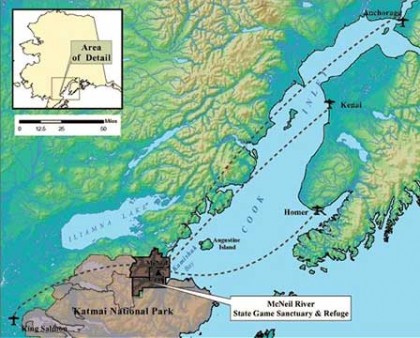Winter The Moon of the Long Nights

The full Moon of the Long Nights glows in the west this morning, roughly over Evergreen. Its gentle light blots out many stars, but makes up for that in its own silvery beauty.
The moon is a place alien to us in spite of its ubiquity. We see it most nights, know its facing terrain intimately, most of it visible through good binoculars. We’ve even sent a few humans to walk upon it, twelve all told, but that small number underscores rather than challenges its wildness. Even if humans settle on the moon, its surface will still be no place for unprotected human bodies. We were not made for that place even though it is our closest solar system neighbor. It is the first outpost of the wilderness, the strange and foreign place, that is everything else in the vastness of space.
There are still places on earth where we can experience wildness. High Country News, a magazine that focuses on issues effecting the contemporary West, has become a favorite read of mine; and, in its Christmas issue, featured an article by Outside writer and editor, Christopher Solomon, “In the Home of the Bear.”
 Solomon recounts a visit to the McNeil River Sanctuary. He won a chance to visit this protected spot for the Alaskan brown bear in an annual lottery. The fairly long quote below has rattled around in my mind since I read it a week or so ago. It reveals, at least to me, a path we could walk to accomplish Thomas Berry’s Great Work for our time, creating a sustainable human presence on this planet, our home in the wildness of space.
Solomon recounts a visit to the McNeil River Sanctuary. He won a chance to visit this protected spot for the Alaskan brown bear in an annual lottery. The fairly long quote below has rattled around in my mind since I read it a week or so ago. It reveals, at least to me, a path we could walk to accomplish Thomas Berry’s Great Work for our time, creating a sustainable human presence on this planet, our home in the wildness of space.
The he in the first sentence is Larry Aumiller, a manager of the sanctuary for three decades. He “spent three decades studying how humans could live in harmony with Ursus arctos on the landscape.”

“…over time, he learned how humans and bears could reside together.
And what works? First of all, restraint — not bulling into the landscape. Bears don’t like surprises. Moving slow and being predictable are good starts. That’s why humans walk the same trails, about the same times every day, and in the same group size. Over decades of such long and careful practice, the bears here have learned to see humans as another presence on the landscape — neither the source of a meal, nor the cause of pain or fear. They are “neutrally habituated,” in the argot of this place…
Almost everywhere else, the ability for humans and bears to move easily among each other has been lost. What is different at McNeil is that humans don’t try to dominate. We listen. We adjust. We find out how it all fits together, and where we fit in. “Here we learn that we can live among the great bears,” Fair writes. “Here we learn the human behaviors that allow this.”” In the Home of the Bear, High Country News
Humans don’t try to dominate. We listen. We adjust. We find out how it all fits together, and where we fit in. Oh, what a wonderful world it would be…
